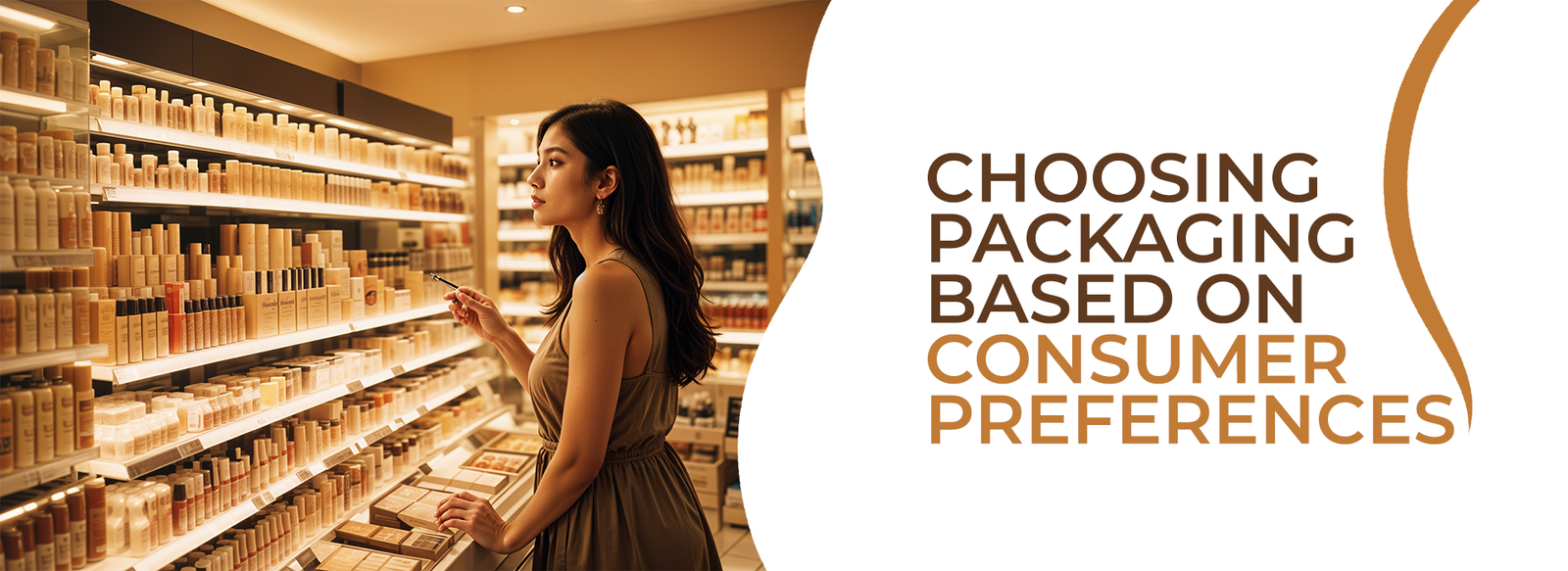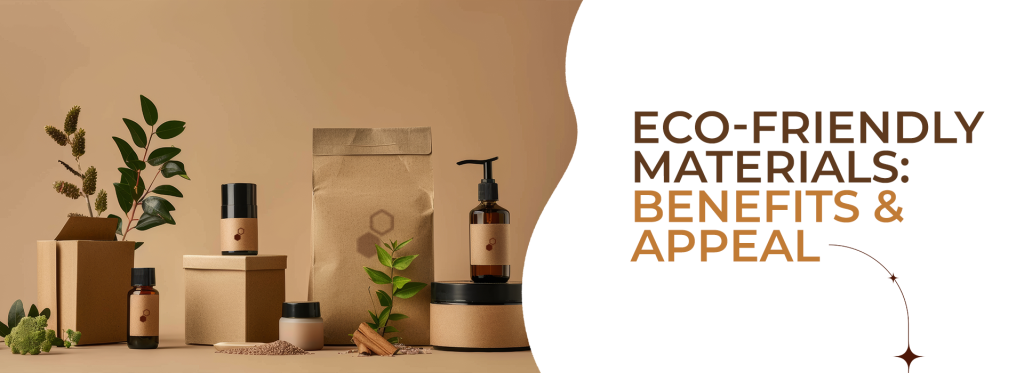
Choosing Packaging Based on Consumer Preferences
Introduction
Understanding the Importance of Packaging
- The Role of Packaging in Product Success: Packaging is often the first interaction a consumer has with a product, making it a critical element in influencing purchasing decisions. Effective packaging can communicate brand values, product quality, and usability, ultimately contributing to the product’s success in the market.
- How Packaging Influences Consumer Behavior: The design, material, and functionality of packaging can significantly impact consumer perceptions and behaviors. Attractive, functional, and unique packaging can enhance the consumer experience, encourage repeat purchases, and foster brand loyalty.
The Evolution of Packaging
- Historical Perspective on Packaging: Packaging has evolved from simple, utilitarian containers to sophisticated, marketing-driven designs. Early packaging focused on basic protection and storage, while modern packaging integrates marketing, sustainability, and convenience.
- Modern Trends and Innovations: Recent trends in packaging include the use of sustainable materials, minimalist designs, smart packaging with integrated technology, and personalized packaging to cater to individual consumer preferences.
Consumer Preferences in Packaging
- What Consumers Look For in Packaging?
- Key Attributes Consumers Prioritize: Consumers prioritize various attributes in packaging, such as durability, ease of use, environmental impact, and aesthetic appeal. Understanding these preferences helps brands design packaging that meets consumer expectations.
- The Impact of Demographic Factors on Preferences: Different demographics have varying preferences for packaging. For instance, younger consumers may prioritize eco-friendliness, while older consumers might focus on functionality and ease of use.
- Sustainability and Eco-Friendly Packaging
- The Rise of Environmentally Conscious Consumers: There is a growing segment of consumers who prioritize sustainability and are willing to pay a premium for eco-friendly packaging. This trend is driven by increased awareness of environmental issues.
- Sustainable Materials and Their Benefits: Brands are increasingly using materials like biodegradable plastics, recycled paper, and compostable materials. These materials reduce environmental impact and appeal to eco-conscious consumers.
- Convenience and Functionality
- Packaging Features That Enhance Usability: Consumers appreciate packaging that is easy to open, resealable, and portable. These features enhance the user experience and can influence purchasing decisions.
- Examples of Convenient Packaging Solutions: Innovations such as spout pouches, easy-tear packaging, and single-serve portions provide convenience to consumers and demonstrate how packaging can add value to the product.
- Aesthetics and Visual Appeal
- The Power of Visual Design in Packaging: Visually appealing packaging can capture consumer attention and differentiate products on crowded store shelves. Effective use of colors, shapes, and graphics can make a product stand out.
- Color Psychology and Its Effect on Consumers: Colors can evoke emotions and influence consumer perceptions. For example, green is often associated with health and sustainability, while red can create a sense of urgency or excitement.
- Branding and Packaging
- How Packaging Reflects Brand Identity: Packaging is a crucial component of brand identity, conveying brand values, personality, and quality. Consistent packaging design across products helps build brand recognition.
- Successful Examples of Branding Through Packaging: Brands like Apple, Coca-Cola, and Tiffany & Co. have used distinctive packaging to reinforce their brand identity and create memorable consumer experiences.

Types of Packaging Materials
- Plastic Packaging
- Advantages and Disadvantages: Plastic packaging is lightweight, durable, and cost-effective. However, it poses environmental challenges due to its non-biodegradable nature and the pollution associated with plastic waste.
- Common Uses in Different Industries: Plastic is widely used in industries such as food and beverage, cosmetics, and electronics due to its versatility and protective properties.
- Paper and Cardboard Packaging
- Environmental Benefits: Paper and cardboard are renewable, recyclable, and biodegradable, making them popular choices for eco-friendly packaging. They also provide a natural, earthy aesthetic.
- Applications and Consumer Perceptions: Paper and cardboard are commonly used for packaging products like cereals, shoes, and shipping boxes. Consumers often perceive them as environmentally friendly options. Recent innovations in paper packaging manufacturing and cosmetics formulations have led to development of Solid-Stick Formulations being packed in tubular containers.
- Glass Packaging
- Sustainability and Reusability: Glass is a sustainable packaging material that can be reused and recycled indefinitely without losing quality. It is also inert, making it suitable for food and beverages.
- Popular Products That Use Glass Packaging: Products like beverages, perfumes, and premium cosmetics often use glass packaging to convey quality and purity.
- Metal Packaging
- Durability and Protection: Metal packaging, such as aluminum and steel, offers excellent durability and protection against contamination and damage. It is also recyclable. Cosmetic formulation compatibility study is required before rolling out products in metal packaging
- Examples of Metal Packaging in the Market: Metal is commonly used for packaging sustainability-focused cosmetics products, beverages, and aerosols. Its robustness and barrier properties make it ideal for preserving product quality.
Customizing Packaging to Consumer Preferences
- Market Research and Consumer Feedback
- Methods for Gathering Consumer Insights: Techniques such as surveys, focus groups, and social media analysis help brands understand consumer preferences and expectations regarding packaging.
- Analyzing Data to Inform Packaging Decisions: By analyzing consumer feedback, brands can identify trends, preferences, and areas for improvement in their packaging strategies.
- Personalization and Customization
- Trends in Personalized Packaging: Personalized packaging, such as custom labels and packaging designs, creates a unique consumer experience and fosters a personal connection with the brand.
- Case Studies of Successful Customization: Brands like Coca-Cola’s “Share a Coke” campaign and Nutella’s personalized jars have successfully used customization to engage consumers and boost sales.
- Technology and Innovation in Packaging
- Smart Packaging Solutions: Innovations like QR codes, NFC tags, and temperature-sensitive inks provide additional functionality and information to consumers, enhancing their experience.
- The Future of Packaging Technology: Emerging technologies, such as biodegradable plastics, active packaging, and advanced materials promise to revolutionize the packaging industry.
Impact of Packaging on Purchasing Decisions
- First Impressions Matter
- How Packaging Influences First-Time Buyers: Attractive and informative packaging can entice first-time buyers to try a product. The initial impression of packaging can significantly impact the likelihood of purchase.
- The Unboxing Experience and Its Significance: A memorable unboxing experience can create a positive emotional connection with the consumer, encouraging repeat purchases and brand loyalty.
- Emotional Connection and Loyalty
- Building Emotional Connections Through Packaging: Packaging that tells a story or evokes positive emotions can create a deeper connection with consumers, fostering loyalty.
- Packaging’s Role in Fostering Brand Loyalty: Consistently high-quality and appealing packaging can reinforce brand loyalty by meeting consumer expectations and enhancing the overall product experience.

Challenges in Packaging Design
- Balancing Cost and Quality
- Cost-Effective Packaging Solutions: Brands must find a balance between cost and quality, ensuring that packaging is affordable while still meeting consumer expectations and regulatory requirements.
- Ensuring Quality Without Breaking the Budget: Strategies such as material optimization, efficient design, and bulk purchasing can help maintain quality without excessive costs.
- Regulations and Compliance
- Packaging Regulations Across Different Regions: Different regions have specific packaging regulations related to materials, labeling, and environmental impact. Brands must navigate these regulations to ensure compliance.
- Ensuring Compliance with Environmental Standards: Adhering to environmental standards, such as reducing packaging waste and using recyclable materials, is essential for regulatory compliance and consumer trust.
- Overcoming Common Packaging Issues
- Solutions to Common Packaging Problems: Addressing issues like packaging damage, leakage, and material inefficiency through innovative design and material choices can improve the overall packaging experience.
Frequently Asked Questions (FAQs)
Durability, sustainability, ease of use, and aesthetic appeal are among the top factors consumers consider when evaluating packaging.
Eco-friendly packaging can positively influence consumer perceptions and purchasing decisions, as more consumers prioritize sustainability in their buying choices.
Examples include biodegradable packaging, smart packaging with interactive elements, and personalized packaging that enhances the consumer experience.
Companies can use surveys, focus groups, online reviews, and social media listening to gather valuable consumer feedback on their packaging.
Trends include sustainable materials, minimalist designs, smart packaging, and personalized packaging solutions.
Regulations vary widely, with different requirements for labeling, materials, and environmental impact depending on the industry and region.
Packaging in online shopping focuses on protection and convenience, while in retail, it emphasizes shelf appeal and brand differentiation.
Small businesses can explore options like bulk purchasing, simple yet effective designs, and sustainable materials to keep costs down while meeting consumer expectations.
Combining attractive design with practical features, such as easy opening and reseal ability, ensures that packaging is both appealing and functional.
Consistent and distinctive packaging design helps build brand identity, making products easily recognizable and reinforcing brand values.


